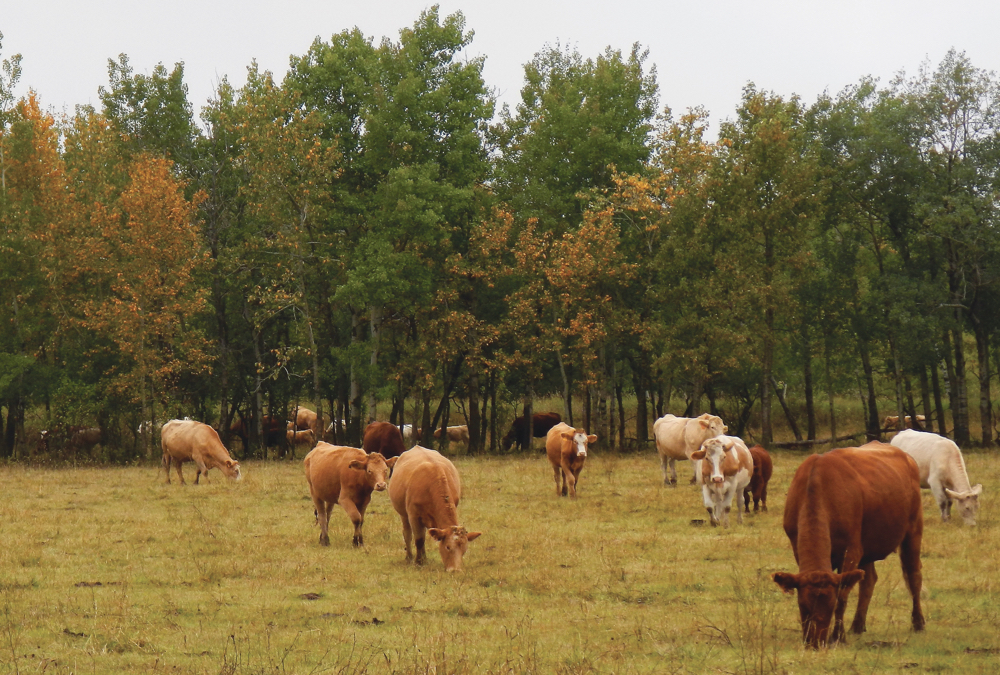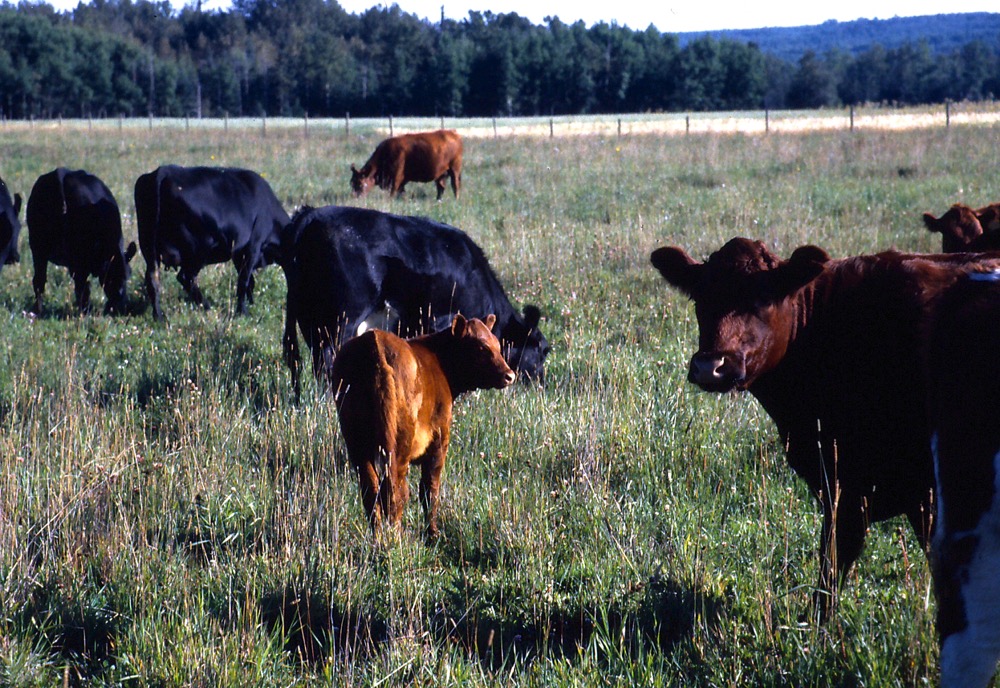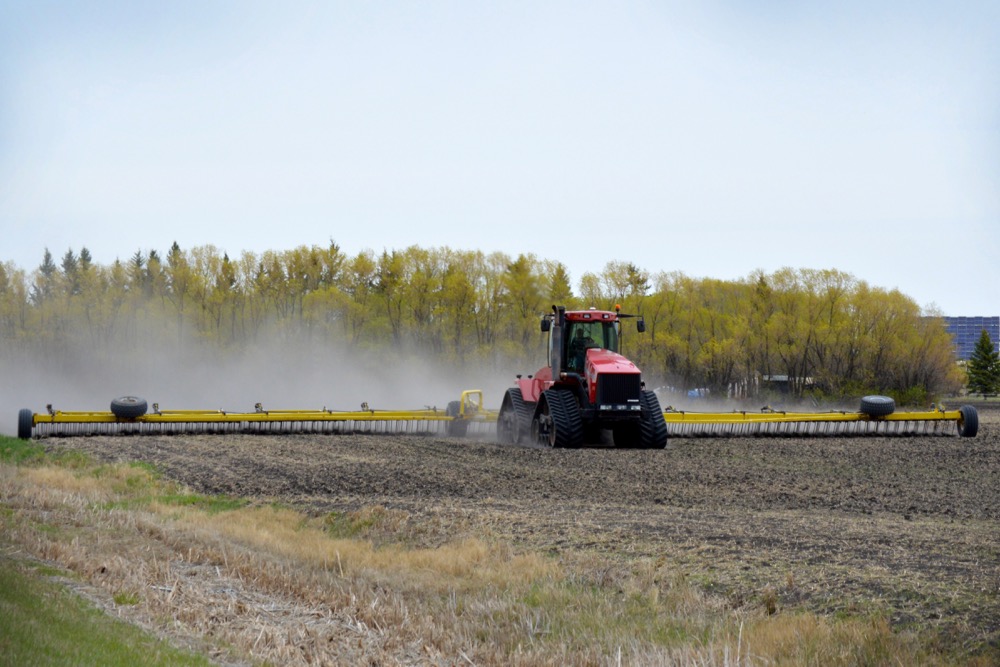Killarney’s Dave Koslowsky has been recognized with a national award for leadership in the forage sector.
The nod from the Canadian Forage and Grassland Association (CFGA) ties off his time with the Manitoba Forage and Grassland Association where he was chair.
Why it matters: A Manitoba couple is helping to lead the way on forage, according to the CFGA.
The CFGA named Koslowsky this year’s Leadership Award winner in November, due in large part to his work with the provincial forage organization.
Read Also

Prairie farmers on guard against grasshoppers
Farmers in Manitoba, Saskatchewan and Alberta may be facing down another bad year for grasshopper crop damage in 2025.
“When I first joined it was struggling,” he said. “Struggling for members and struggling for finances.”
The CFGA gives the award every year to groups or individuals who highlight the association’s goals and, “whose leadership has impact of national and/or international significance.”
A longtime member of the Manitoba Forage and Grassland association, Koslowsky headed the board during a major overhaul of the group’s vision statement, governance and bylaws. It came at a time when the province as a whole was beginning to pay more attention to the importance of forage crops.
“This set the foundation for MFGA to become a more relevant organization to the point now where MFGA’s board is comprised of the most diverse and well-rounded board of forage leaders from all walks of the industry,” the Canadian Forage and Grassland Association said in a release.
The group has since drawn new members to its roster, including many young producers who have since taken a seat on the executive.
Today, the MFGA vision statement leans on many of the same practices touted during holistic management and regenerative agriculture events, making specific mention of things like cover crops and soil health.
“These healthy and prosperous lands will benefit forage and grassland producers, local communities and society as a whole,” the association website states.
The organization has also embarked on large-scale projects in an effort to promote its mission to society at large. Most recently, the MFGA spearheaded the almost $2-million Aquanty project, a hydrological modelling program pitched to governments as a flood mitigation tool, but that the MFGA hopes may also help gauge impact of practices like increased riparian areas. The organization just wrapped up a public outreach with its project, and the newly launched platform was open to the public until Dec. 1.
A forage story
Koslowsky’s management, and the path that led him towards the CFGA Leadership Award, dates back almost a decade. The farmer decided to start intensifying management in the hope of putting more animals on the land and reaping the increased forage benefits. His fellow producers who had moved to a similar system were already touting this effect.
A mixed farmer, Koslowsky runs 120 head of cattle, plus forage to support his herd, on his 1,720-acre farm near Killarney.
“We grow enough feed for our own use — not a whole lot for sale,” he said.
“Most of the time we keep it for ourselves, carry it over, just trying to be self-sustaining and self-insuring.”
Pastures on the parcel are rotationally grazed, although most intensely on his home pasture and Koslowsky has plans to increase the practice as he gets the opportunity to set up more fencing. Drainage, likewise, takes a starring role. The mixed farm includes grassed runways for drainage, areas that take the brunt of any high-water events and slow water to fight erosion, and are later hayed for the benefit of his herd.
Koslowsky’s introduction to rotational grazing happened almost by accident, he now recalls. The producer wanted to calve on grass and moved the herd to one end of his home pasture to make them easier to check.
“We just wanted to have more cattle out on grass, so more cows mean more calves which, at the end of the day, mean more dollars in our pocket,” he said.
Later, he said, the farm began noting increased benefits of soil health. Grass improved, he said, allowing them to house yet more cattle on the same land base.
Stepping back
Koslowsky’s time on livestock boards ended this year, when he stepped down as one of the directors of the MFGA, as well as his post as a director with the Manitoba Beef Producers.
Koslowsky is far from done with his own forage improvements, however. The farm recently excavated an additional dugout and has slated the addition for an incoming remote watering system, something the farmer says he would like to pursue more intently, along with more fencing.




















